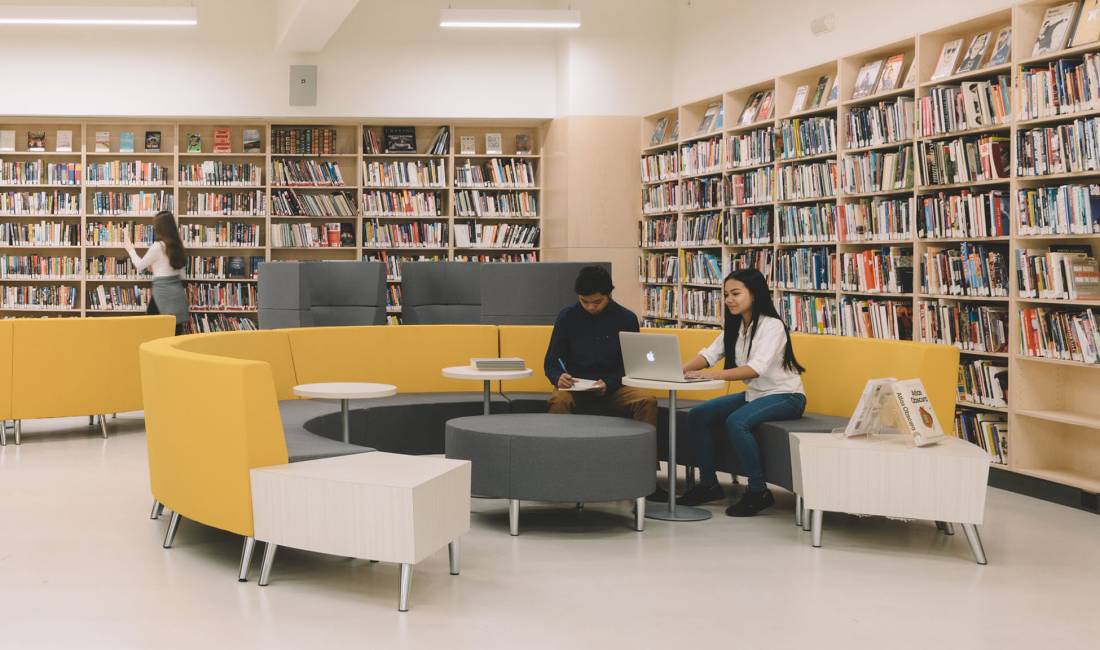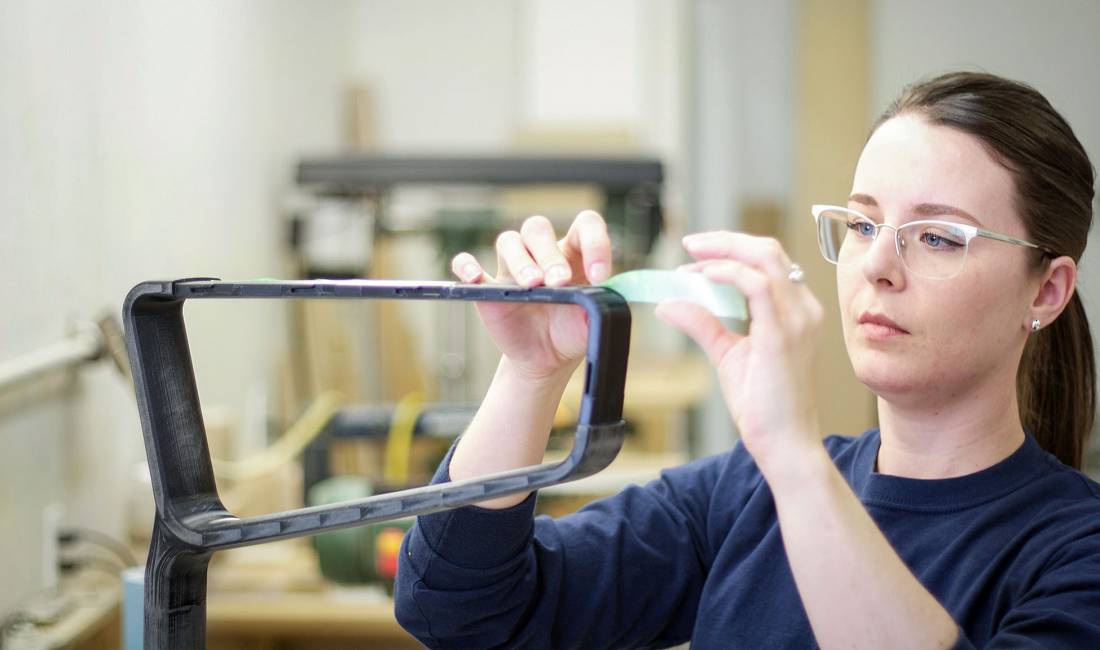The Spaces In Between: Where the Next Big Ideas Emerge
Trend | May 01, 2018 | Connie Tam
Everyday, you take dozens of short journeys. Whether walking from your office to the meeting room, or from the classroom to the library, you take a designated path: the hallway.
At its core, the hallway is simply a long passage from which doors lead into rooms. But in recent years, it has morphed into someplace much more social. Students tend to hang out in hallways before and after classes, and designers have taken note.
The modern hallway is perhaps better defined as the space in between destinations.
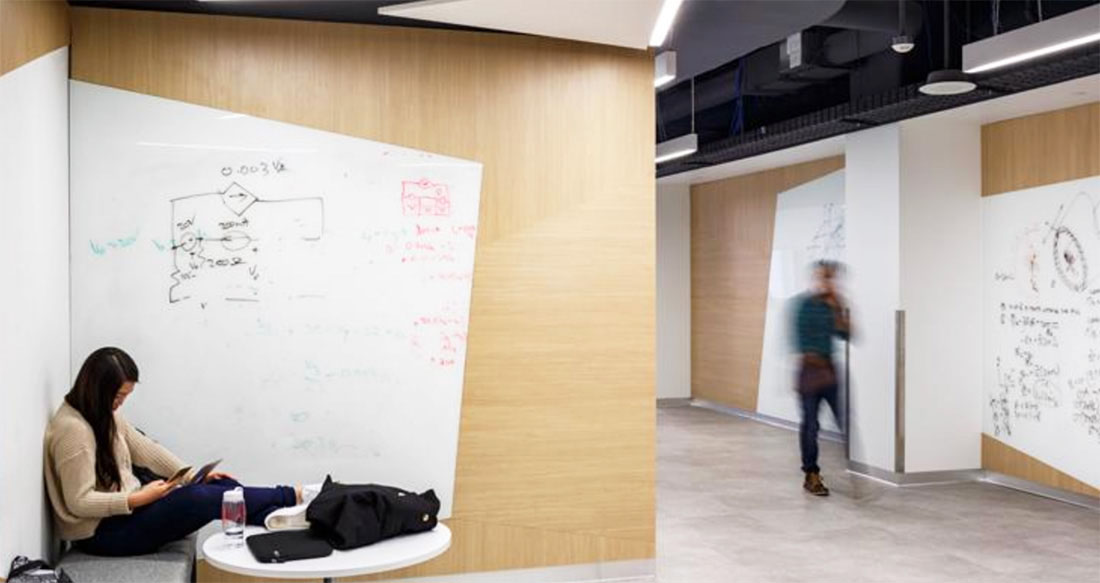 Whiteboards are built into this futuristic hallway at York University.
Whiteboards are built into this futuristic hallway at York University.
 The HBO office in Seattle uses whiteboards to transform a long corridor into a place for brainstorming.
The HBO office in Seattle uses whiteboards to transform a long corridor into a place for brainstorming.
The journey of moving along the corridor is no longer only about reaching the room at the end of the hall. What happens in between is equally meaningful. As people move from one place to another, they run into familiar faces—friends, coworkers or instructors—with whom they strike up conversations. Besides contributing to a more vibrant environment, impromptu conversations can lead to spontaneous ideas.
It is no wonder that the spaces in between have been dubbed “serendipity spaces” by American architects Darren L. James and Nestor Infanzon1.
This shift into informality is exactly what makes the spaces in between so impactful.
Serendipity spaces add a new dimension to work and education. Within the confines of four walls, hierarchy is usually recognizable; in a classroom, the instructor leads and the students follow. Step outside into the hallway though, and the atmosphere is instantly more casual. This shift into informality is exactly what makes the spaces in between so impactful.
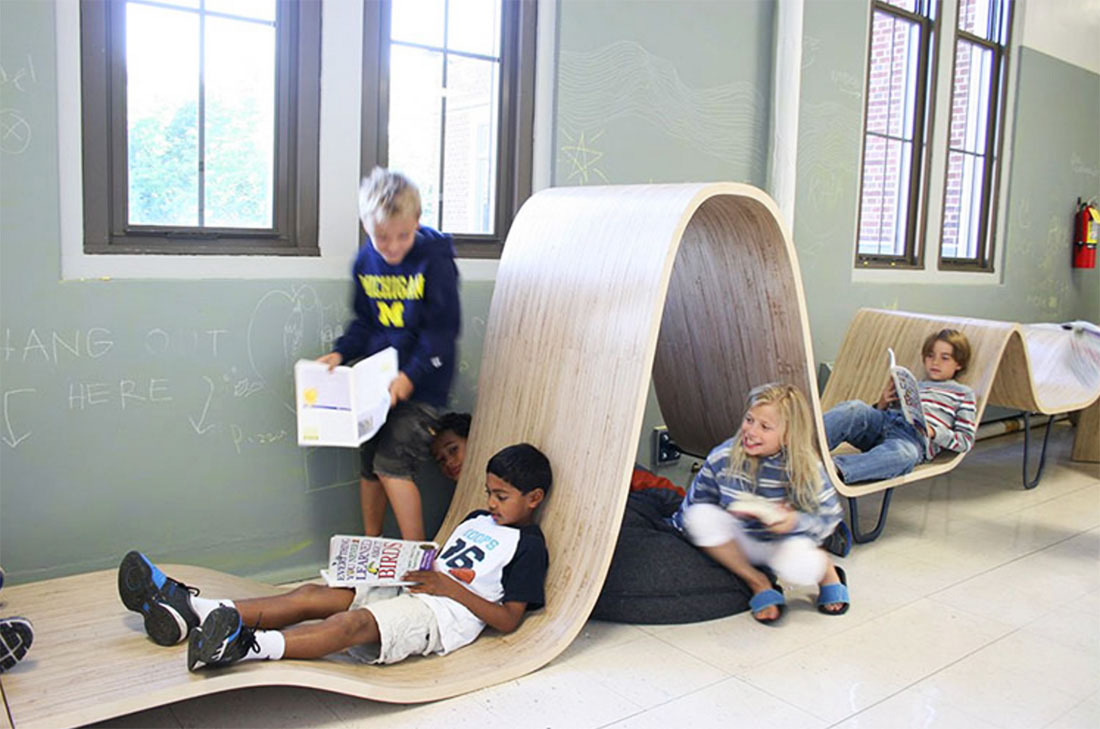 The Flying Carpet design lets young learners play, interact and read within a small space.
The Flying Carpet design lets young learners play, interact and read within a small space.
At schools, hallways are where students tend to wait before classes, and where they congregate afterwards. Students might spill out of classrooms and continue class discussions; similarly, colleagues might leave a meeting still in conversation. People may feel more open to sharing ideas that are not yet fully formed. And this is the journey. You are encouraged to stop in these spaces to process your thoughts before moving on to the next destination.
The spaces in between carry a social element that is increasingly vital to workplace culture and campus life. What designers have realized is that the hallway not only connects people to places, but also to one another.
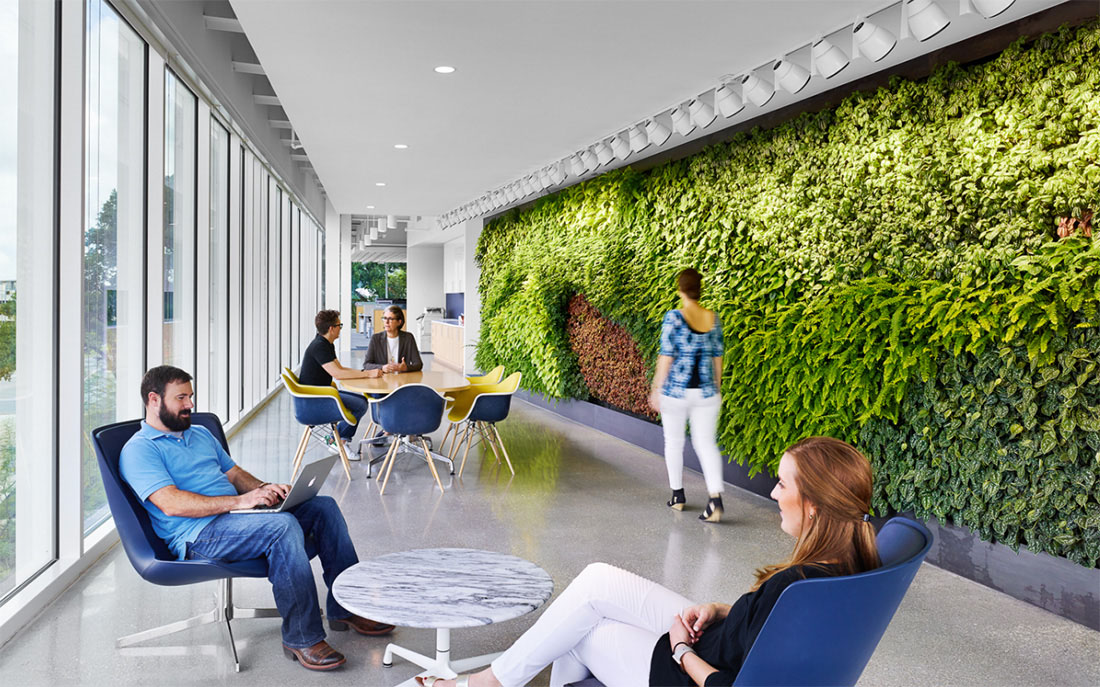 Natural light and a plant wall makes this airy hallway a great place to talk between meetings.
Natural light and a plant wall makes this airy hallway a great place to talk between meetings.
Increasingly, designers make conscious design choices to create informal, yet functional corridors. Since spaces filled with natural light have been shown to inspire creativity, school and office hallways have become wider and brighter. In some buildings where the hallway designs are particularly thoughtful, in-between spaces become as much of a destination as the lecture hall.
Designers also specify furniture that encourage users to work together, or at least sit together while they work. Lounge seating, often paired with personal tables, welcomes people to work or rest as needed. Mobile furniture is popular as well, as it gives students and employees the power to configure their space according to their own needs. And of course, nothing can draw a more loyal crowd than available power outlets.
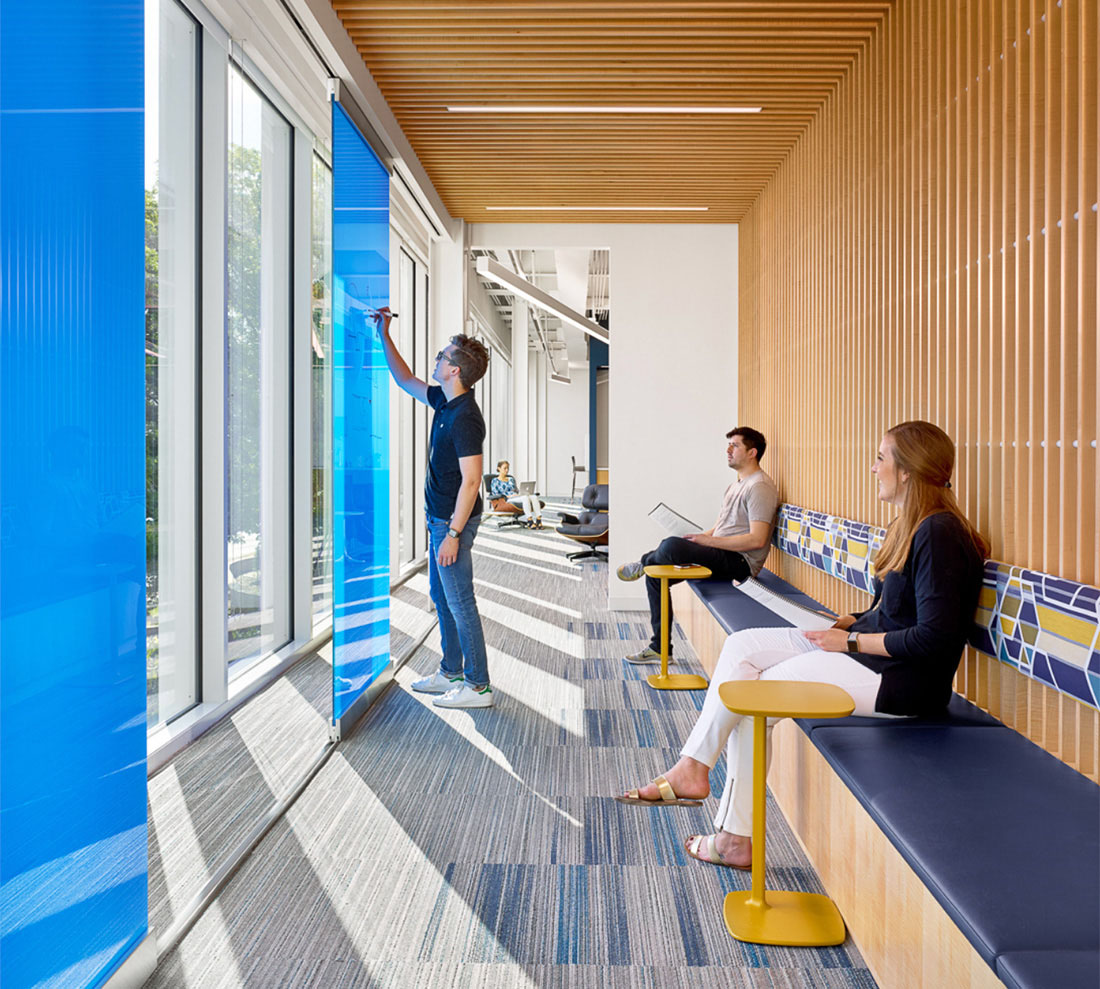 In this office designed by Perkins+Will, blue glass panels and personal tables make a narrow in-between space stylish and functional.
In this office designed by Perkins+Will, blue glass panels and personal tables make a narrow in-between space stylish and functional.
Despite the additional investment, institutions and companies are on board with the trend. Indeed, in-between spaces help create a vibrant culture, but the approach is a practical one, too. Real estate is expensive, and hallways take up otherwise valuable space.
And perhaps the spaces in between can be the solution to much more.
Expensive real estate has affected many industries, and healthcare is not exempt. For years, shortage of hospital beds means that patients are treated in the hallways2. As designers and institutions become more supportive of building the spaces in between for workplaces and schools, can this be the approach to solving a pressing issue in healthcare? After all, design trends are a response to real needs.
1 Darren L. James, AIA and Nestor Infanzon, FAIA, RIBA, 'Smart' Spaces Aren't Just for Classrooms Anymore
2 Laura Donnelly, "Nurses Say NHS Patients Treated in Corridors as Beds Run Out," The Telegraph, May 2012.
Enjoy this article? Don't forget to share.




